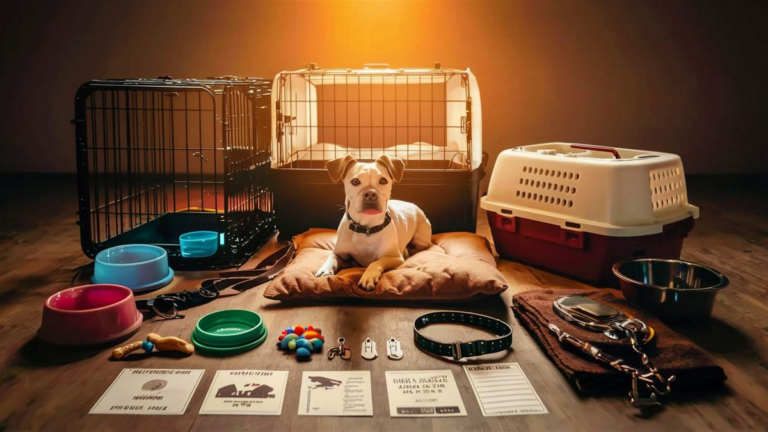Shipping a dog on a plane requires careful planning and consideration to ensure the safety and comfort of your furry companion throughout the journey. Whether you’re relocating with your pet or sending them to a new destination, it’s essential to understand the process and take necessary precautions.
Preparing Your Dog for Air Travel
Before shipping your dog on a plane, it’s crucial to make preparations to minimize stress and ensure a smooth experience for your pet. Here are some essential steps to follow:
- Visit the veterinarian: Schedule a visit to the veterinarian to ensure your dog is in good health and up-to-date on vaccinations.
- Choose the right crate: Select a sturdy and well-ventilated crate that complies with airline regulations. The crate should be large enough for your dog to stand, turn around, and lie down comfortably.
- Acclimate your dog to the crate: Familiarize your dog with the crate by gradually introducing them to it and providing positive reinforcement.
- Label the crate: Clearly label the crate with your dog’s name, your contact information, and any special instructions for handling.
Booking the Flight
When booking a flight for your dog, consider the following factors:
- Choose a pet-friendly airline: Research airlines that have pet-friendly policies and procedures in place.
- Book a direct flight: Whenever possible, opt for a direct flight to minimize the duration of travel and reduce stress on your dog.
- Notify the airline: Inform the airline in advance that you will be traveling with a dog to ensure they have space available for pet transportation.
Preparing for Departure
As the departure date approaches, take the following steps to ensure a smooth travel experience:
- Confirm the booking: Double-check the flight details and confirm the booking with the airline.
- Prepare necessary documentation: Ensure you have all required documentation, including health certificates and vaccination records, as per airline and destination requirements.
- Provide comfort items: Place familiar items such as blankets, toys, and treats in the crate to provide comfort and familiarity during the journey.
- Stay calm and reassuring: Dogs can sense their owner’s emotions, so it’s essential to remain calm and reassuring throughout the departure process.
During the Flight
While your dog is in transit, here are some tips to keep in mind:
- Follow airline instructions: Adhere to the airline’s guidelines and instructions regarding check-in procedures and crate requirements.
- Monitor your dog’s well-being: Check on your dog’s well-being during layovers or whenever possible, but avoid opening the crate unless necessary.
- Stay in contact: Provide contact information to airline staff and remain reachable in case of any updates or emergencies.
Upon Arrival
Once you and your dog have reached your destination, take the following steps:
- Retrieve your dog promptly: Upon arrival, retrieve your dog promptly and provide them with food, water, and bathroom breaks as needed.
- Monitor for signs of stress: Watch for signs of stress or discomfort in your dog and consult a veterinarian if necessary.
- Allow time to adjust: Give your dog time to adjust to their new surroundings and provide plenty of love and attention during the transition period.
Shipping a dog on a plane requires careful planning, preparation, and consideration of your pet’s well-being. By following these guidelines and taking necessary precautions, you can ensure a safe and comfortable journey for your furry friend.
Choosing the Right Size Crate
Ensuring the crate’s size is appropriate for your dog is crucial for their comfort and safety during air travel. Here’s how to choose the right size crate:
| Dog Size | Crate Size |
|---|---|
| Small Breeds (e.g., Chihuahua, Pomeranian) | 18-24 inches (height), 24-30 inches (length) |
| Medium Breeds (e.g., Beagle, Cocker Spaniel) | 24-26 inches (height), 30-36 inches (length) |
| Large Breeds (e.g., Labrador Retriever, Golden Retriever) | 30-36 inches (height), 36-42 inches (length) |
| Giant Breeds (e.g., Great Dane, Mastiff) | 36-40 inches (height), 42-48 inches (length) |
Providing Adequate Ventilation
Proper ventilation is essential to ensure your dog’s comfort and well-being during the flight. Here are some tips for providing adequate ventilation:
- Choose a crate with ventilation holes on multiple sides to promote airflow.
- Avoid covering the crate with anything that may restrict airflow, such as blankets or towels.
- Ensure the crate’s ventilation holes are not blocked by any objects placed inside.
Regulating Temperature
Regulating the temperature inside the crate is important to prevent your dog from overheating or getting too cold during the flight. Here’s how to maintain a comfortable temperature:
- Avoid placing the crate in direct sunlight or near sources of extreme heat or cold.
- Provide bedding material that is suitable for the temperature conditions your dog will encounter.
- Consider attaching a clip-on fan to the crate to provide additional airflow during warmer temperatures.
Frequently Asked Questions
1. Can I Sedate My Dog for Air Travel?
It’s generally not recommended to sedate your dog for air travel unless advised by a veterinarian. Sedation can affect your dog’s ability to regulate body temperature and may increase the risk of respiratory issues.
2. What If My Dog Has Special Needs?
If your dog has special needs or medical conditions, consult with your veterinarian before planning air travel. They can provide guidance on how to accommodate your dog’s specific requirements and ensure a safe journey.
3. Are There Any Breed Restrictions for Air Travel?
While most airlines allow dogs of various breeds to travel, some may have restrictions or specific requirements for certain breeds, especially brachycephalic (short-nosed) breeds. It’s important to check with the airline beforehand to ensure compliance with their policies.
See also:






